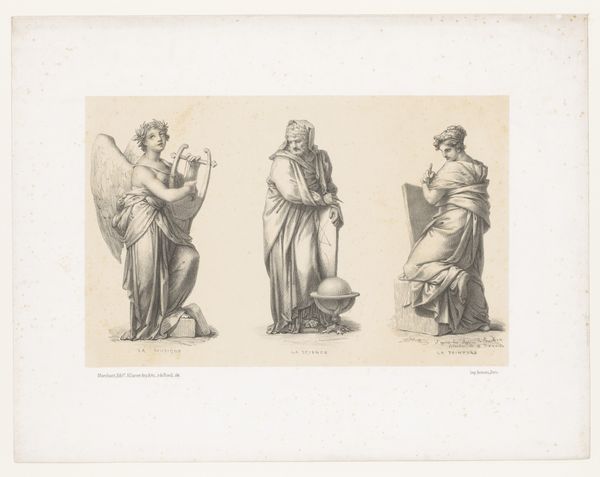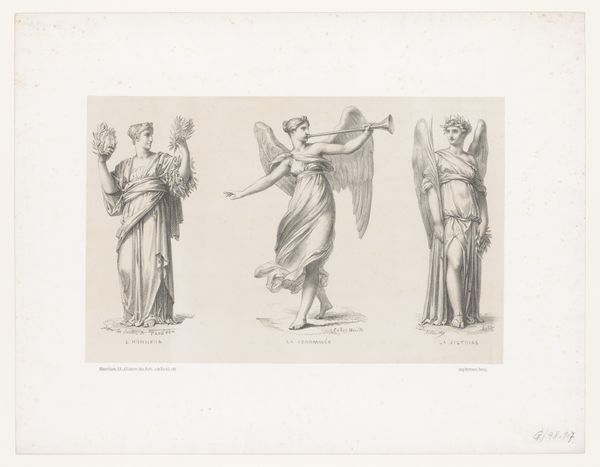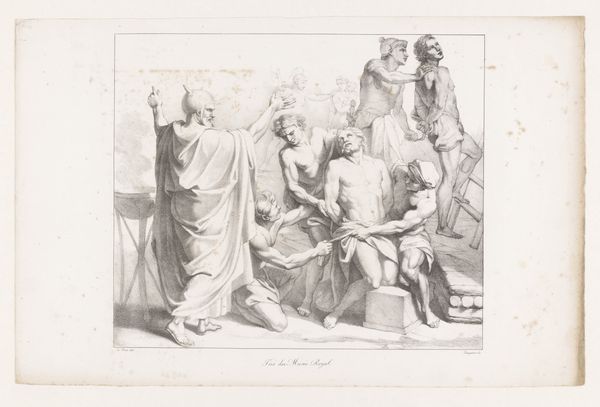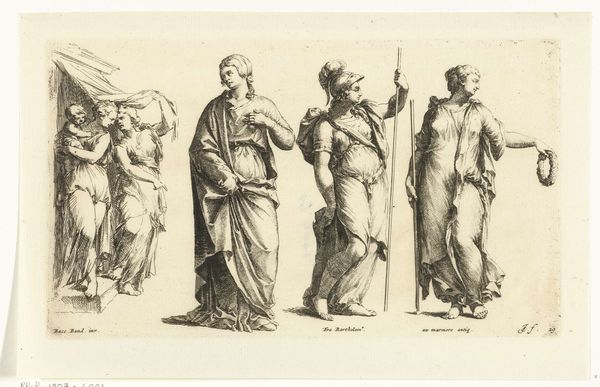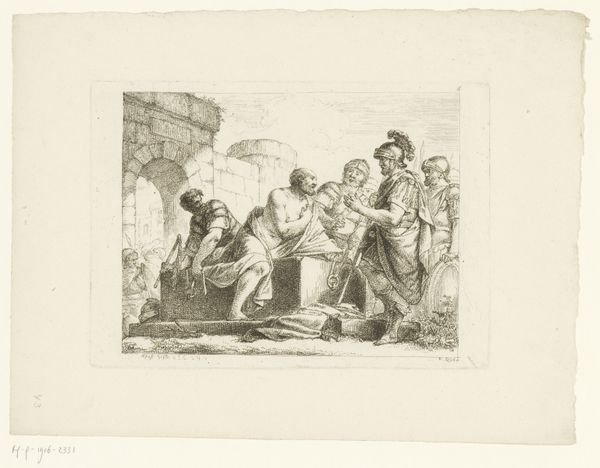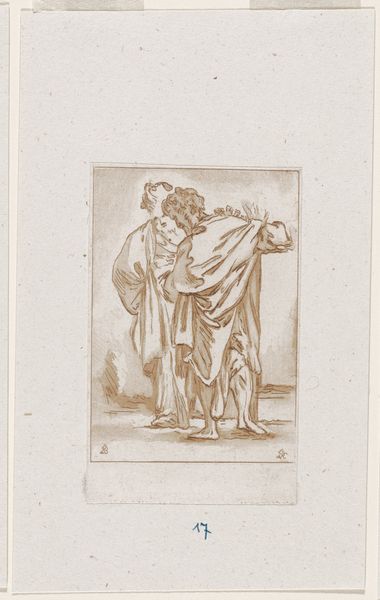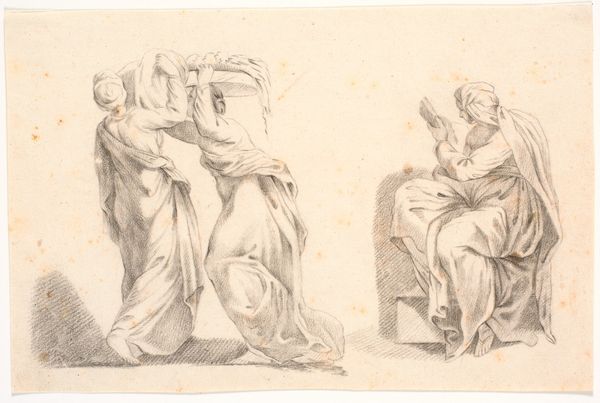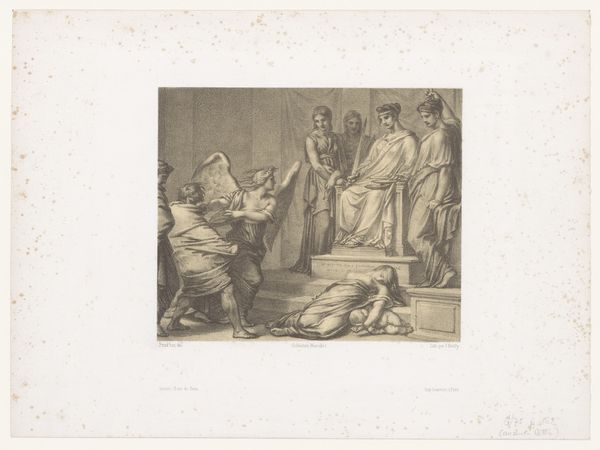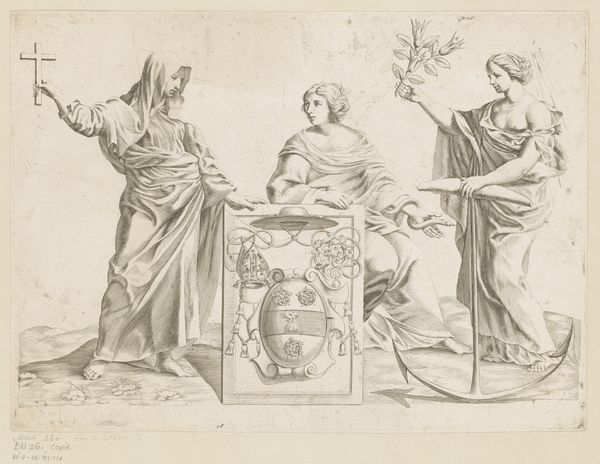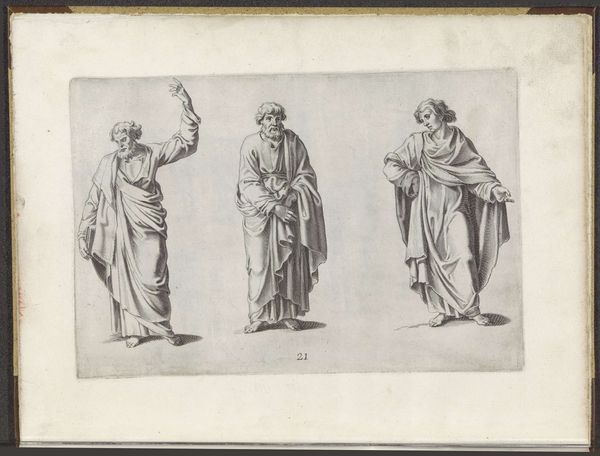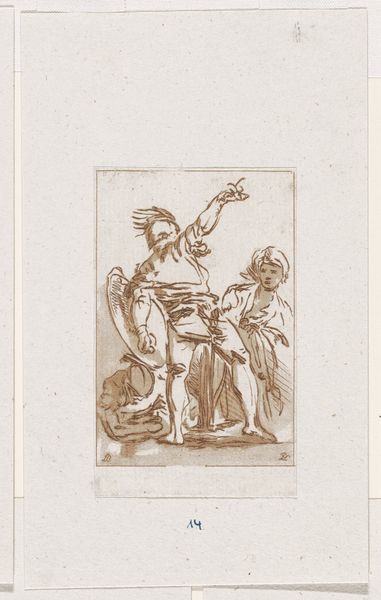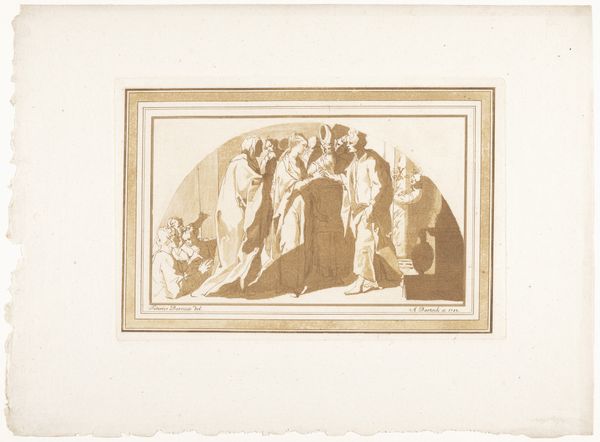
drawing, pencil
#
drawing
#
allegory
#
figuration
#
pencil
#
academic-art
Dimensions: height 301 mm, width 389 mm
Copyright: Rijks Museum: Open Domain
Editor: We’re looking at “Literature, Peace, and Industry” from 1855 by Julien-Léopold Boilly, rendered in pencil. It depicts three classical figures. I'm really struck by how it embodies a very optimistic, almost utopian view of societal values. What can you tell us about the social context informing this piece? Curator: This drawing offers an intriguing window into the mid-19th century and its prevailing ideologies. The allegorical representation of Literature, Peace, and Industry wasn’t just about aesthetic appeal, but rather a very intentional statement on progress and societal values. These figures acted as almost propaganda; representing the ideals embraced by the bourgeoisie who commissioned art, supported academies, and ultimately dictated which narratives became dominant. Note how ‘Industry’ appears noble, not the harsh reality it imposed. Editor: So it's less about pure artistic expression, and more about reinforcing specific ideas in the public's consciousness? Curator: Exactly. How do these figures’ clothing and presentation conform to established academic artistic expectations and then project desirable moral values? Consider also how exhibitions during this period, often controlled by the Academy, played a crucial role in showcasing and validating these themes, directly influencing public perception and promoting specific cultural agendas. The art world acted almost as a loudspeaker. Editor: I guess I hadn't considered how deliberately curated the art of that time must have been in shaping what society valued. It makes you wonder what messages are embedded in the art of our own time! Curator: Precisely, examining artworks through a historical lens opens doors to broader understandings of cultural values and their evolution. Thank you!
Comments
No comments
Be the first to comment and join the conversation on the ultimate creative platform.
